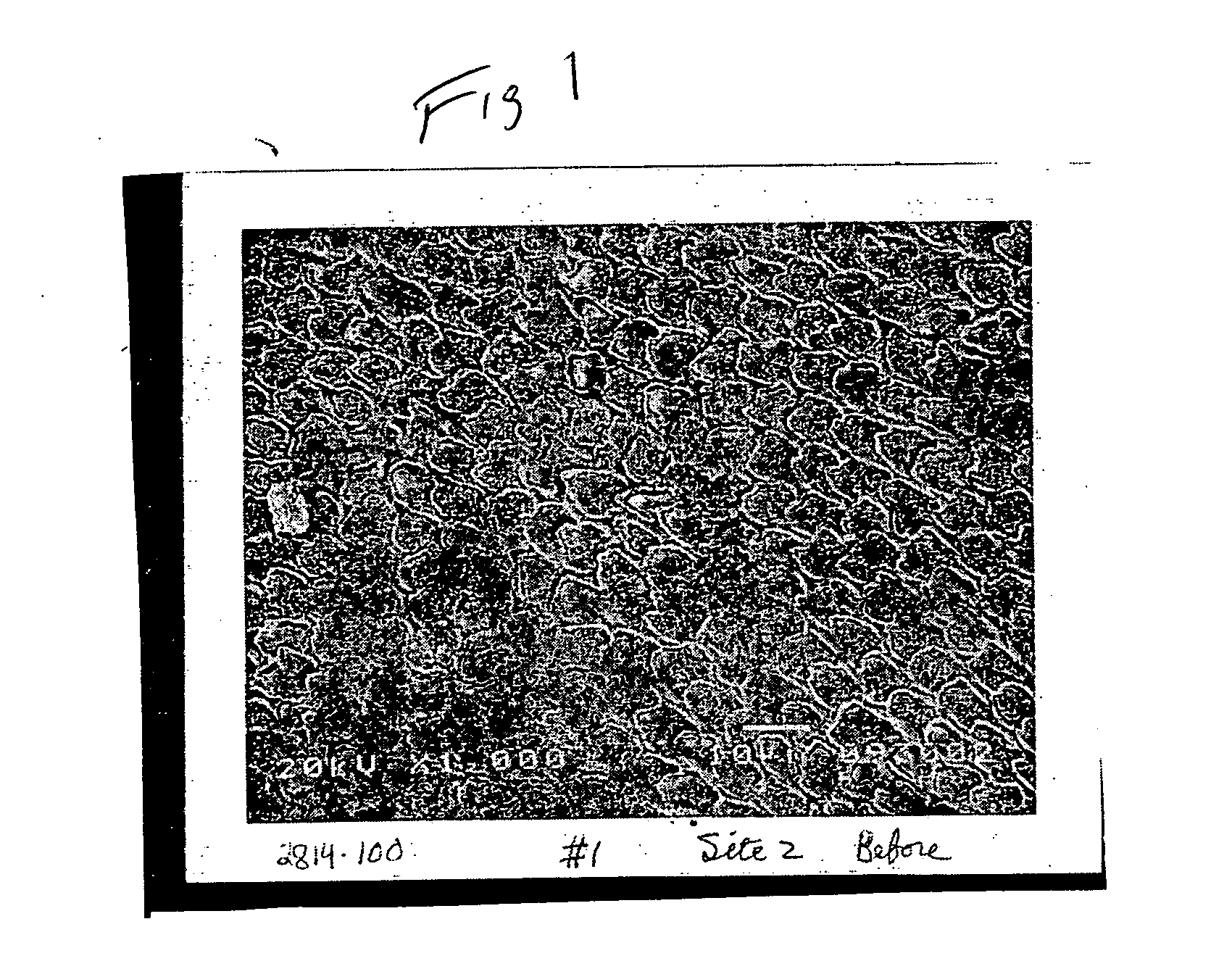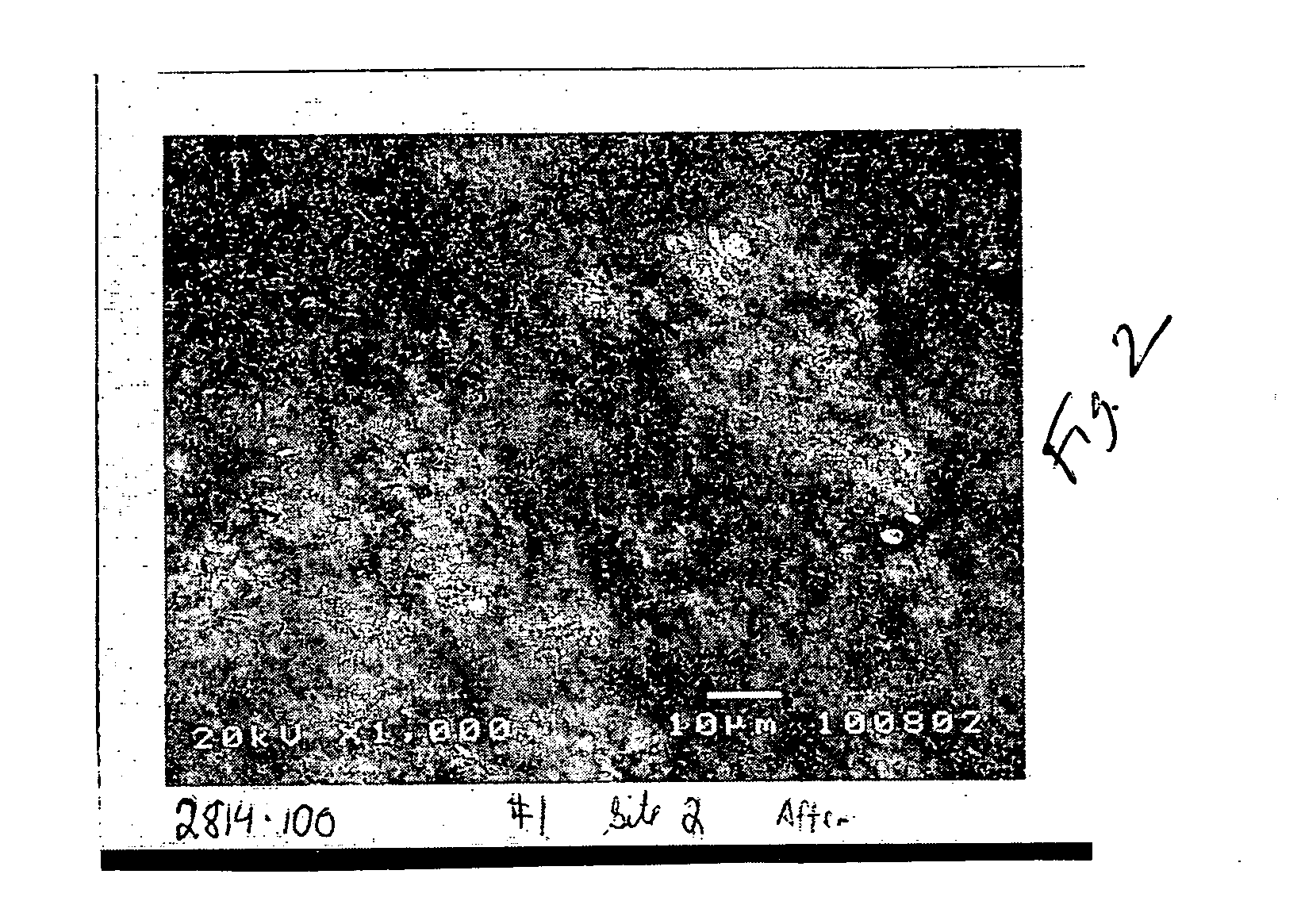Tooth enamel rejuvenating toothpaste
a toothpaste and tooth enamel technology, applied in the field of oral products, can solve the problems of tooth enamel surface damage, scratching, and many imperfections in the surface enamel layer, and achieve the effects of reducing the usefulness of calcium salts, rapid and premature precipitation, and increasing the solubility of partially soluble calcium salts
- Summary
- Abstract
- Description
- Claims
- Application Information
AI Technical Summary
Benefits of technology
Problems solved by technology
Method used
Image
Examples
example 1
[0072] The following is a two-part dentifrice composition within the scope of the present invention. This composition can be provided in a tube in which the first and second parts are separated by a physical divider.
[0073] Part A (Cationic)
Raw Material%W / WGlycerin34.550Sodium carboxymethyl cellulose0.500Xanthan Gum0.300Methyl paraben0.050Propyl paraben0.050Sorbitol (70%)29.297Purified water10.000Calcium sulfate4.000Sodium sulfate3.000Silicone dioxide (Aerosil 200VS)2.000Hydrated silica abrasive14.000Sodium lauryl sulfate0.750Flavor, color, and sweetner1.503Total100.000
Part B (Anionic)
[0074]
Raw Material%W / WGlycerin26.810Potassium phosphate dibasic anhydrous1.800Sodium carboxymethyl cellulose0.500Purified water11.400Sodium fluoride0.440Sodium carbonate anhydrous1.800Sodium bicarbonate54.000Sodium lauryl sulfate1.250Flavor, sweetner2.000Total100.000
In this example the two parts are dispensed from a two compartment tube in the ratio of 0.45 parts of Part A to 0.55 parts of Part B. ...
example 2
[0075] A sample of dental enamel having a size of a 3 ml diameter core was drilled from a tooth. The enamel sample was treated by contacting the specimen with an acid cola beverage for a time period of about one hour. The enamel specimen was rinsed with cold water. As can be seen from the SEM photograph of FIG. 1, the surface of the enamel has been substantially etched by the acid beverage. From FIG. 1 it can be seen that the horseshoe-shaped rods have been eroded to leave a pitted surface leaving the interstitial portions of the enamel protruding from the surface.
[0076] The etched enamel specimen was then contacted with a composition of the present invention containing a calcium sulfate salt, a fluoride salt, dipotassium phosphate and sodium bicarbonate in a carrier. The paste was diluted to yield a slurry containing one part paste to two parts water. The etched enamel specimen was soaked with the slurry for 5 minutes, rinsed with water, and soaked again. The specimen was soaked a...
PUM
 Login to View More
Login to View More Abstract
Description
Claims
Application Information
 Login to View More
Login to View More - R&D
- Intellectual Property
- Life Sciences
- Materials
- Tech Scout
- Unparalleled Data Quality
- Higher Quality Content
- 60% Fewer Hallucinations
Browse by: Latest US Patents, China's latest patents, Technical Efficacy Thesaurus, Application Domain, Technology Topic, Popular Technical Reports.
© 2025 PatSnap. All rights reserved.Legal|Privacy policy|Modern Slavery Act Transparency Statement|Sitemap|About US| Contact US: help@patsnap.com


